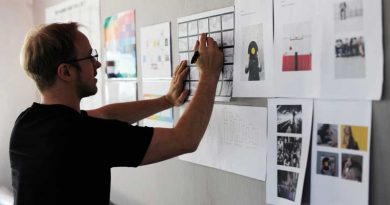Applying Design Thinking in Education to Fight Extremism
Last week, we woke up to the terrible attacks in Paris, and the world is still mourning the more than 150 killed in the incident. A couple of days before, a similar terrorism attack took place in Lebanon, with more than 45 killed. In the last few years, increasing acts of hate crimes and terrorism have been observed around the world in US, UK, Germany, France, India, Myanmar, and Australia.
Death tolls rise as security solutions fail to stop radical ideologies from migrating through new media and social networks. In the design and innovation domain, our role is to solve problems through investigating the causes of the final effect, and to work together to develop proper strategies that avoid the problem in the future. The question is, can we, as designers, contribute to preventing extreme ideas and the voice of hate spreading among our children?
In a previous article, I highlighted the DAC research centre initiations for design against crime products aiming to solve common theft problems. While DAC can definitely research further solutions that can protect people from criminal acts such as terrorism attacks, the role of design can start in a very early stage through implementing design thinking in school programs.
Design thinking models tend to fuel innovation and creativity by placing human beings in the center of the process. While there are different design thinking models, most of the models follow similar steps such as the d.school Stanford design model. The Stanford model flows through Investigating the different design thinking models, which is used to identify how implementing the proper models in schools can contribute to halting extreme ideologies and the ideas of hate. IDEO was one of the leading organization that targeted design thinking in education through their Design Thinking for Educators guide, which provided guides and workbooks to apply a creative process in classes and communities for a more innovative environment. Many schools have already started to adopt design thinking programs. The IDEO map includes more than 200 schools around the world that use design thinking as part of their education.
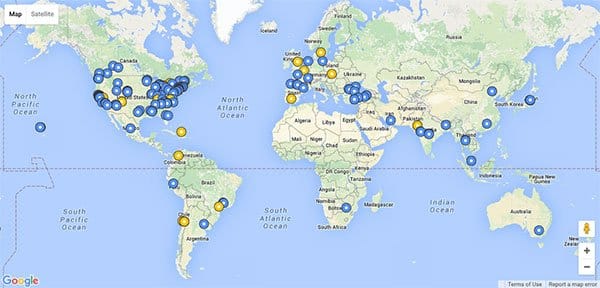
The following design thinking roles are based on the d.school Stanford and IDEO models. While the following roles of design thinking are common benefits of implementing it within school programs, it can definitely contribute to driving students’ focus toward more human-centered activities.
Human-Centered Thinking
Creative thinking models aim to explore topics, solve problems, or find creative ideas through the flow of steps that conduct group work and the sharing of ideas. Hence, most of models start with understanding the surrounding community and valuing people’s lives in order to solve problems or explore innovative ideas.
Children who are involved in design thinking programs are required to work with their peers to understand people’s problems and what they need to improve in their lives. This phase is defined as the Empathize phase in the d.school Stanford design thinking model. This step puts children in the shoes of their friends and neighbors by adopting a proactive behavior as they build their initial thoughts on others’ needs and brainstorm how to solve others’ problems.
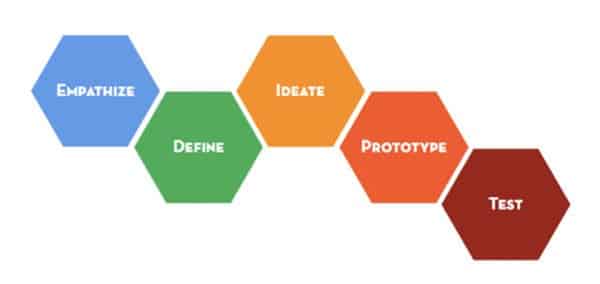
Understanding the value for research and investigating problems can help young people avoid information that can unconsciously lead their minds to misleading information, such as the ideologies and beliefs of radical, extremist groups. Adopting basic research methods can help young people contrast between verified and misleading information resources.
Better Understanding of the Problems
One of the main problems that leads to incorrect understanding to existing problems or issues is inaccurate definition of the problem. The correct definition for problems and deep understanding to their causes is the first step to reach the right solution.
Most design thinking models start with building a clear understanding of the problems. Many tools can be used to define the problem and its causes, such as the Cause Effect diagram and mind maps. These tools allow students to think as part of group with their peers to highlight the problems they need to address. This attitude reflects on students’ personal lives, and introduces strategies such as identifying the social problems and attempting to solve the problem, rather than involving themselves in other problems such as hate crimes or joining extremist groups.
“Framing the right problem is the only way to create the right solution.” – Hasso Plattner, Institute of Design, Stanford University.
Generating Ideas
the Ideate phase involves creating a wide range of ideas that can lead to solving problems. Hasso Plattner, Institute of Design, Stanford University, defines this phase, not as trying to gain the right idea, but attempting to reach the broadest range of possibility. This step leads students to think beyond the ordinary and obvious solution to find creative ways to solve the problem through exploring unexpected ideas and creating an innovative flow.
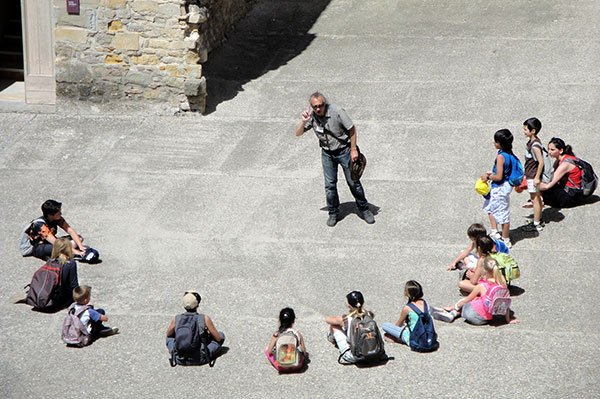
Discussing ideas and brainstorming different approaches helps students feel the importance of their participation in social activities, which leads to understanding their productive role in the community. It demonstrates how they can achieve community appreciation and personal success through creative thinking.
Building Things
Watching the ideas form into prototypes has a deep, motivational impact on children and adults as well. The prototype phase tends to turn ideas into prototypes that can be discussed and tested by the team in order to explore successful possibilities for ideas. The purpose of this phase is to provide further exploration to ideas with a low cost of materials, which reduces the impact of failure and increases the ability to visualize additional ideas at a low cost.
On the social domain, this phase achieves the same impact as the previous ideate phase. Children are able to understand the high priority for community success by thinking beyond themselves.
Testing Ideas
As the last testing phase approaches, children are able to work with their peers and accept comments and feedback in order to improve their ideas. They are now able to understand that success is a collaborative work. They use their peers’ feedback to improve ideas as well as contribute to enhancing others’ ideas with their own comments. Now, students can see their ideas either as a prototype or a final product while having their say and contributing to the success of the final successful idea or solution.
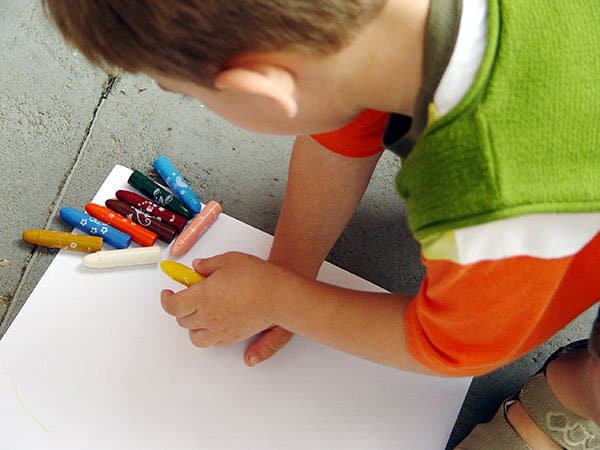
Comparing the various phases of design thinking with most of the currently applied education systems, we can highlight the high potential of creativity and the engaging possibilities through the application the above-mentioned phases. Furthermore, children and young people build a solid understanding of how they can search for the right information, define the real causes behind various problems, and develop ideas through conversation with their peers, in addition to testing hypotheses in order to reach innovative ideas and solutions for problems.
In sum, adopting design thinking in schools can lead to better learning experiences and, subsequently, avoiding many community problems such as hate crimes, terrorism, and discrimination, which have dramatically increased in recent years.






